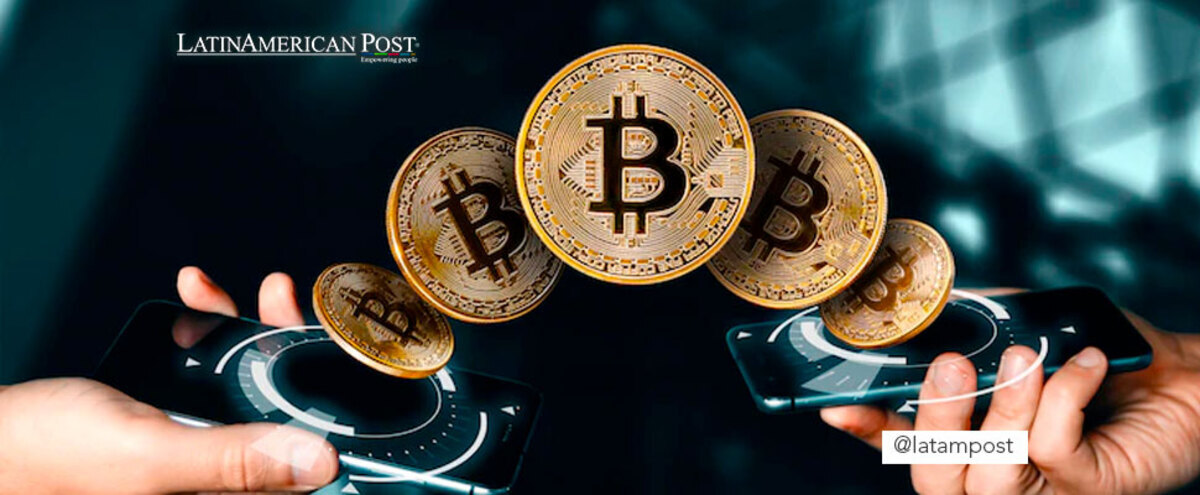Bitcoin Transactions: An Explanation Of Peer-to-peer Technology
Two fundamental principles of the Bitcoin and blockchain communities are decentralization and peer-to-peer transfers.

Vickie Sung
Escucha este artículo
Two fundamental principles of the Bitcoin and blockchain communities are decentralization and peer-to-peer transfers. Bitcoin's creator is known to be the legend Satoshi Nakamoto who first introduced Bitcoins as a peer-to-peer electronic monetary system. On centralized exchanges, however, the great majority of users purchase and trade cryptocurrencies, with market makers or brokers acting as the other side of the transaction. During your search for a suitable platform for carrying out your BTC investments, you would come across several apps and websites such as Crypto Trader.
Due to the greater use, convenience, efficiency, cheaper costs, and regulatory compliance, centralized exchanges and brokers have become common. If the market price of 0.1 BTC is US$3.000, I will transfer you US$3.000, and you will then send 0.1 BTC to my BTC wallet in exchange. There are no intermediaries; we transfer straight. To ensure that money is only released after both parties have made their transfer, we typically use an escrow service as trust difficulties become more prevalent.
During peer-to-peer trading, the participants can and must agree on a price that is independent of the going market rate. Using P2P trading systems, where buyers and sellers post advertisements to publicize their prospective trades, we can locate a buyer or seller at the required price.
How does the peer-to-peer system work?
You can think of peer-to-peer (P2P) trading as a system for matching buyers and sellers for potential trades. Like other exchanges, these services don't charge any fees for the transaction and demand that users put their money in a digital wallet that is under their independent control.
P2P exchanges link cryptocurrency merchants and buyers, thus users may run into markets like Facebook or Craigslist. As a result, individuals can look through cryptocurrency adverts or make their own.
Feedback or a rating system in this network offers protection. As a result, you can research the credibility of buyers or sellers of assets on P2P networks before making a deal.
Different types of trading techniques
-
Advertising Purchase and Sale: Some P2P platforms let you purchase and sell adverts. You might decide to charge a greater price to make more money or a lower cost to draw in more customers.
-
Arbitrage trading: This trading technique is used when purchasing cryptocurrency on one platform, and then reselling it on another at a little higher price.
-
High Demand Payment Method: Customers are inclined to pay extra if their payment method is uncommon. People who choose to conduct business in their home currency, for instance, must pay more if it is not frequently used.
Read also: US $3.2 million a month Elon Musk intends to earn with verified Twitter
Benefits of peer-to-peer system
-
Zero trading fees: Compared to centralized cryptocurrency exchanges, some P2P trading platforms do not impose commission or transaction fees. These fees typically range from 0.1-0.3%. For the on-chain transfers, however, hefty gas or network fees may be charged.
-
Convenient payment options: The peer-to-peer technology comes with flexible payment options keeping the mind the ease of convenience for the crypto users.
-
Escrow services: Since P2P trading places an even greater emphasis on trust, it is typically a complex escrow service that enables users to make transfers with confidence because funds are only released until the other party has finished their share of the trade. To be clear, not all P2P trading systems provide escrow services, and those that do typically demand fees in return.
Disadvantages of peer-to-peer system
-
Scams: One of the biggest dangers of P2P trading that are frequently disregarded along with its benefits is fraud. Since there is no centralized authority, the possibility of fraud is rather significant. False profiles can be created by individuals to deceive customers or vendors. Therefore, you must be mindful of these frauds.
-
Low liquidity: When compared to other exchanges, these platforms have less liquidity. This implies that there can be circumstances in which nobody matches your trade order. In this manner, you would have to wait longer, and your assets might depreciate during that period.
-
Slow trading: P2P platforms conduct transactions at a more leisurely pace. This is primarily due to mid-transaction cancellations that occasionally occur.
Conclusion
Due to the absence of a centralized authority and the significant volume of traders using P2P trading platforms, they can be more profitable than centralized exchanges. However, it is also true that compared to traditional exchanges, these sites always carry a much higher level of risk. So do your homework and use caution if you choose to use these platforms.




